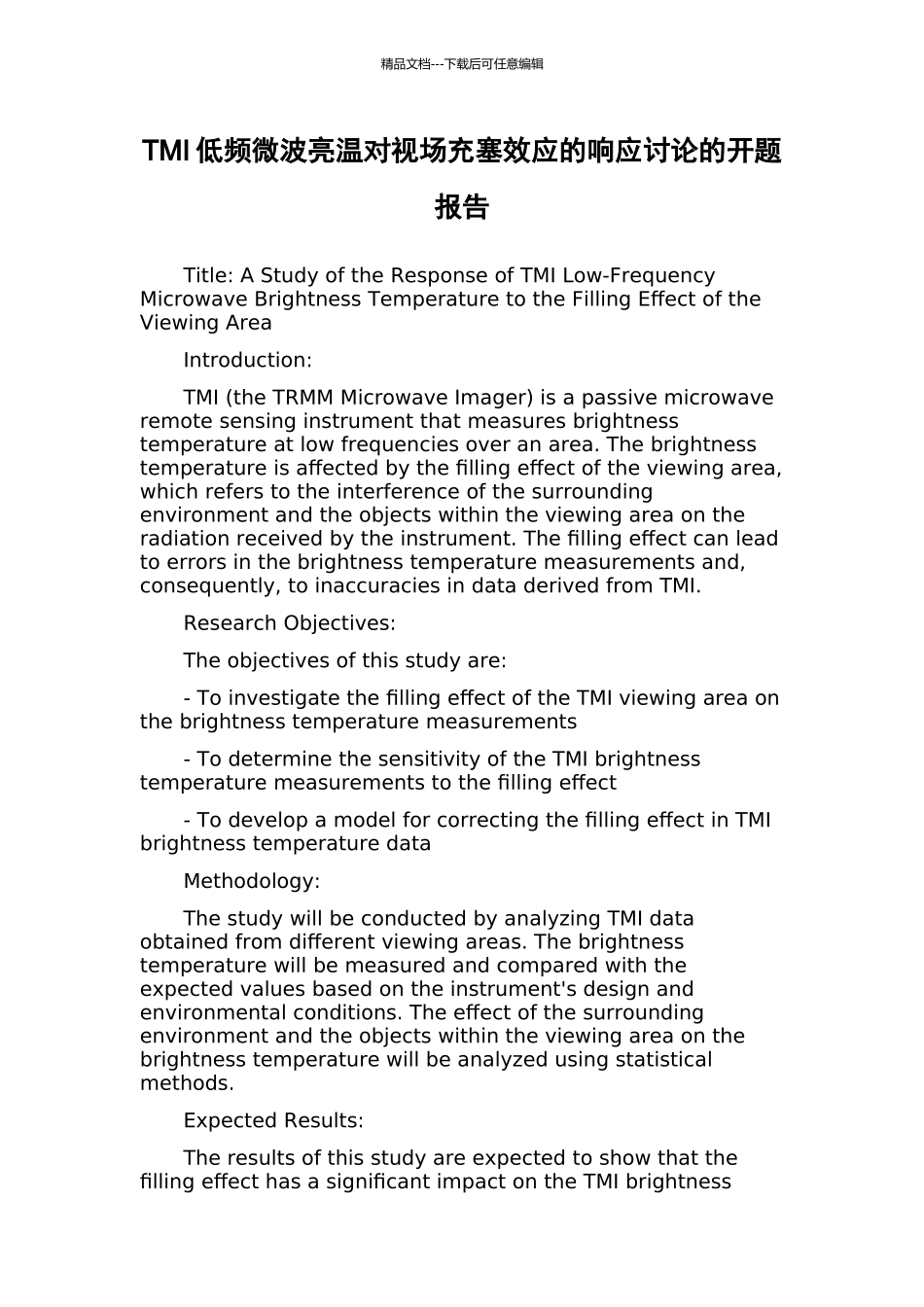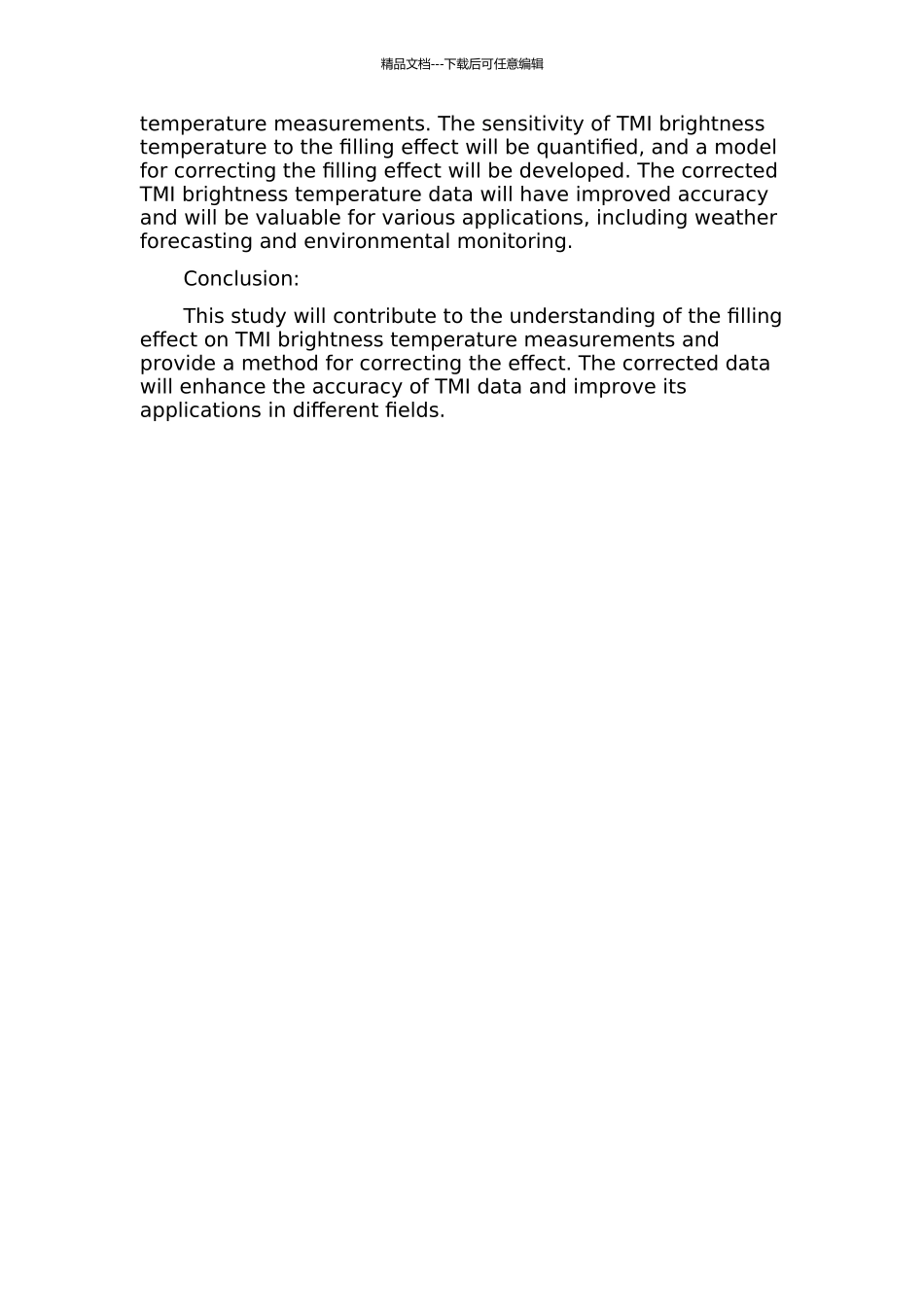精品文档---下载后可任意编辑TMI 低频微波亮温对视场充塞效应的响应讨论的开题报告Title: A Study of the Response of TMI Low-Frequency Microwave Brightness Temperature to the Filling Effect of the Viewing AreaIntroduction:TMI (the TRMM Microwave Imager) is a passive microwave remote sensing instrument that measures brightness temperature at low frequencies over an area. The brightness temperature is affected by the filling effect of the viewing area, which refers to the interference of the surrounding environment and the objects within the viewing area on the radiation received by the instrument. The filling effect can lead to errors in the brightness temperature measurements and, consequently, to inaccuracies in data derived from TMI.Research Objectives:The objectives of this study are:- To investigate the filling effect of the TMI viewing area on the brightness temperature measurements- To determine the sensitivity of the TMI brightness temperature measurements to the filling effect- To develop a model for correcting the filling effect in TMI brightness temperature dataMethodology:The study will be conducted by analyzing TMI data obtained from different viewing areas. The brightness temperature will be measured and compared with the expected values based on the instrument's design and environmental conditions. The effect of the surrounding environment and the objects within the viewing area on the brightness temperature will be analyzed using statistical methods.Expected Results:The results of this study are expected to show that the filling effect has a significant impact on the TMI brightness 精品文档---下载后可任意编辑temperature measurements. The sensitivity of TMI brightness temperature to the filling effect will be quantified, and a model for correcting the filling effect will be developed. The corrected TMI brightness temperature data will have improved accuracy and will be valuable for various applications, including weather forecasting and environmental monitoring.Conclusion:This study will contribute to the understanding of the filling effect on TMI brightness temperature measurements and provide a method for correcting the effect. The corrected data will enhance the accuracy of TMI data and improve its applications in different fields.

